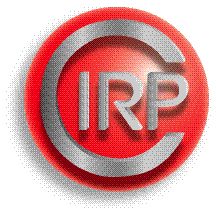Definition
Rolling is a process used to change the geometry of the produced material. Usually the cross section is reduced, and, as a result, the length increases.
Theory and Application
Rolling
The majority of all metals will undergo a rolling process during the production chain from metal casting to the final product, e.g., strips, blanks, profiles, etc. The respective rolling processes may be used to define the product geometry, material properties, or functional surface properties.
The main goals of flat rolling processes are the reduction of the cross section accompanied by the enlargement of the rolling stock length and the defined adjustment of material properties (e.g., yield strength or surface property) (Groover and Tonkay 2007).
A variety of rolling processes exists that lead to different final geometries and material properties. A brief overview of the most important rolling...
This is a preview of subscription content, log in via an institution.
References
Allwood JM, Cullen JM, Carruth MA (2011) Going on a metal diet: using less liquid metal to deliver the same services in order to save energy and carbon. Department of Engineering, Cambridge
Chiran A, Moisa B, Nicolescu G, Priceputu I, Bacinschi Z (2010) Cold rolling shape defects of stainless steel wide strips. In: Advances in control, chemical engineering, civil engineering and mechanical engineering. WSEAS Press, Puerto De La Cruz, pp 154–158
Ginzburg VB, Ballas R (2000) Flat rolling fundamentals. Dekker, New York
Groover MP, Tonkay GL (2007) Fundamentals of modern manufacturing: materials, processes, and systems, 4th edn. Wiley, New York, pp 396–403
Neumann H (1975) Kalibrieren von Walzen [Calibration of rolls]. VEB Deutscher Verlag für Grundstoffindustrie [VEB German Publishing House for Primary Industry], Leipzig (in German)
Sandmark PA (1972) Comparison of different formulae for the calculation of force in hot-rolling mills. J Metall 1:313–318
Siebel E (1932) Die Formgebung im Bildsamen Zustande: theoretische Grundlagen der technischen Formgebungsverfahren [forming in plastic state: theoretical foundations of technical forming processes]. Stahleisen, Düsseldorf (in German)
von Kármán T (1925) Beitrag zur Theorie des Walzvorganges [contribution to the theory of the rolling process]. Z Angew math Mech [J Appl Math Mech] 5:139–141 (in German)
Author information
Authors and Affiliations
Corresponding author
Editor information
Editors and Affiliations
Section Editor information
Rights and permissions
Copyright information
© 2018 CIRP
About this entry
Cite this entry
Senge, S., Hirt, G. (2018). Rolling. In: The International Academy for Production (eds) CIRP Encyclopedia of Production Engineering. Springer, Berlin, Heidelberg. https://doi.org/10.1007/978-3-642-35950-7_16752-2
Download citation
DOI: https://doi.org/10.1007/978-3-642-35950-7_16752-2
Received:
Accepted:
Published:
Publisher Name: Springer, Berlin, Heidelberg
Print ISBN: 978-3-642-35950-7
Online ISBN: 978-3-642-35950-7
eBook Packages: Springer Reference EngineeringReference Module Computer Science and Engineering


